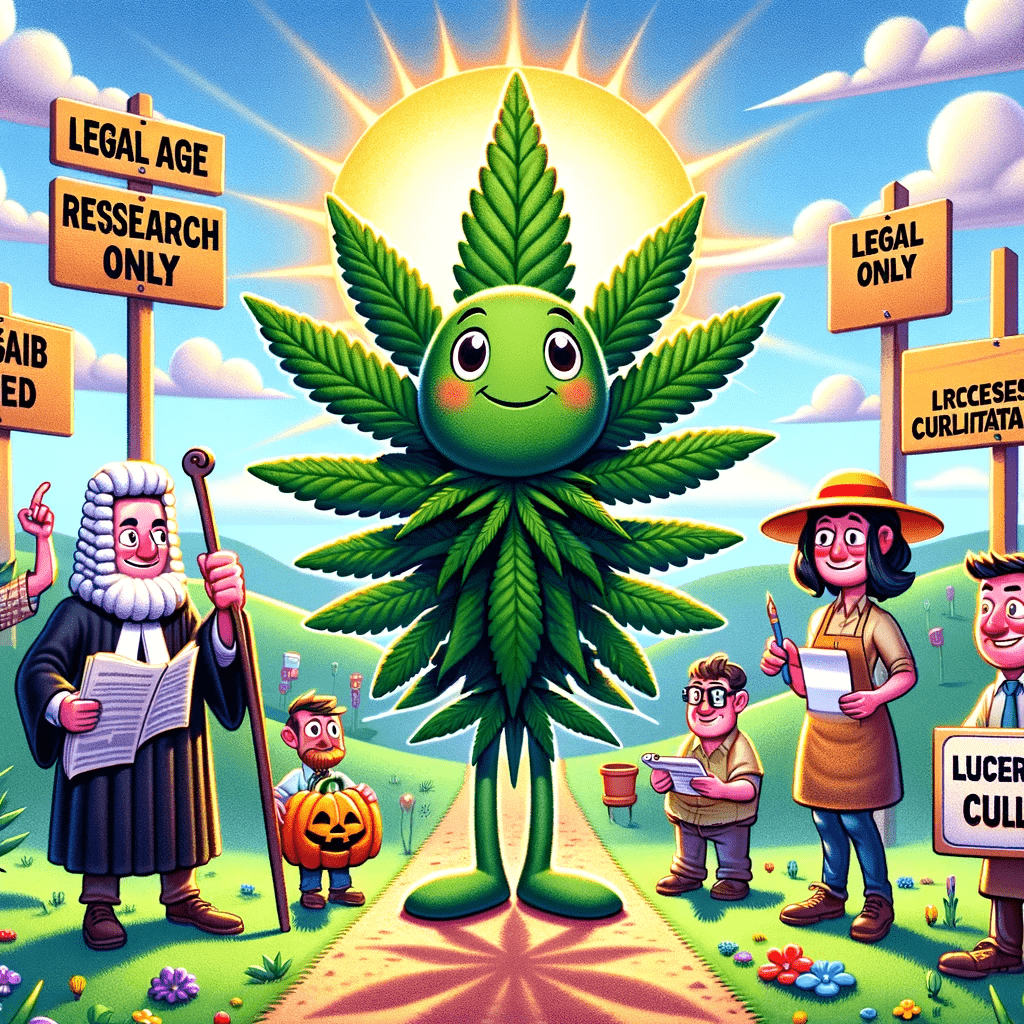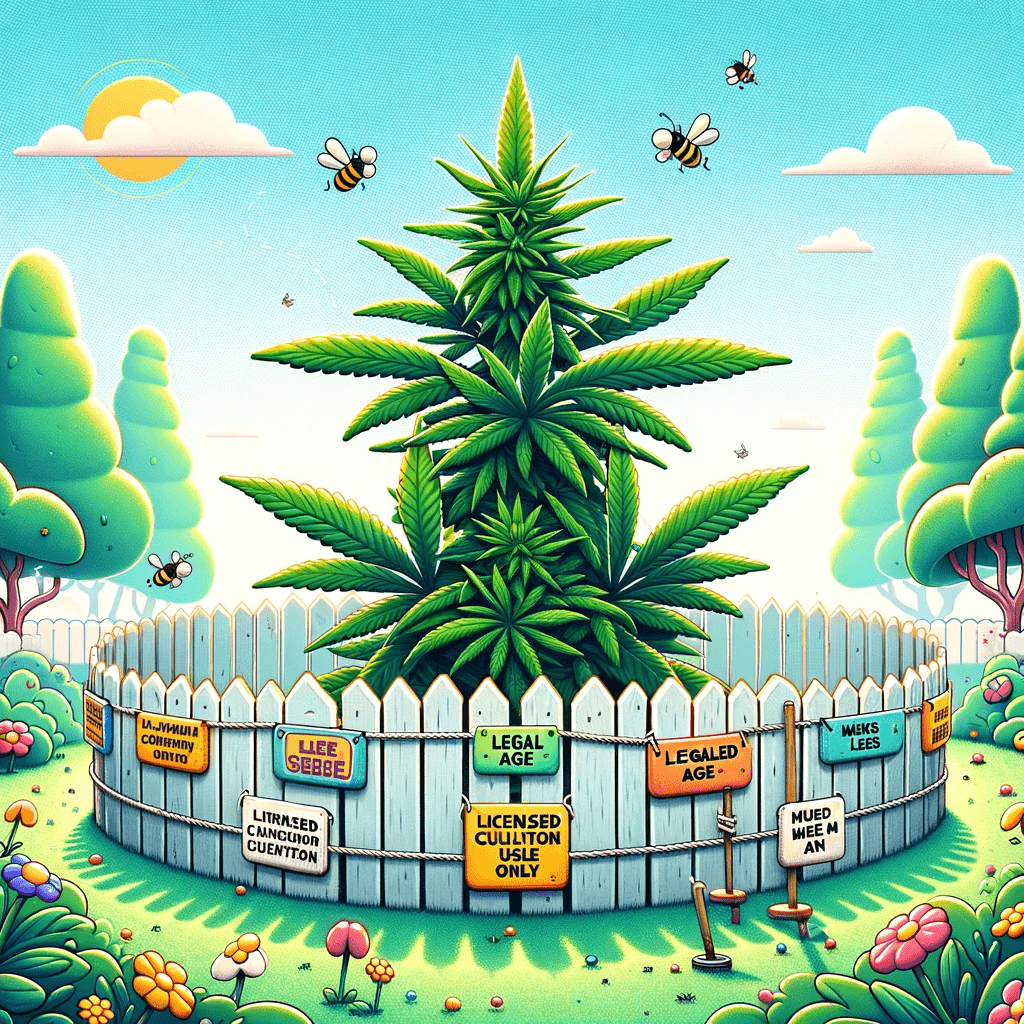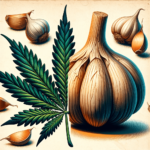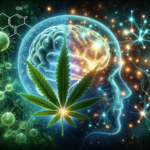What is cannabis?
Cannabis, a.k.a. marijuana or weed, is a drug derived from the Cannabis sativa plant. It has many chemical components, like THC and CBD, which have different impacts on the body and mind. People smoke, vaporize, or eat cannabis. In many places, it is prohibited but allowed for medical purposes in some areas.
When consumed, cannabis brings about psychoactive effects such as relaxation and changed states of consciousness. It is thought to have medicinal values too. Yet, long-term use can be harmful, like affecting cognitive function and addiction. Plus, cannabis types differ in strength and elements.
It is essential to know about the pros and cons of cannabis if you want to use or cultivate it. Being aware of various strains, ways of consumption, dosage instructions, and laws is necessary to dodge serious aftermaths.

It’s important to be aware of the rules and regulations around cannabis to avoid any legal issues. Before taking part in cannabis-related actions, make sure you are up-to-date with local laws on possession or usage. Cannabis has been around for so long, it’s like the great-great-grandparent of the plant world – except it’s still cool and hip with the kids.
- How Cannabis and Fitness Are Working Together
- We Finally Know What Gives Cannabis That Funky Smell
- The Rich History of Zig Zag Rolling Papers
- How Wellness Companies Are Harnessing The Power Of The Cannabis Plant
- The Rigorous Process of Getting Cannabis into Dispensaries
- How Much Do Dispensaries Make?
History of cannabis
To learn about the history of cannabis, delve into its origins and its use in different cultures. Connecting with the roots of cannabis use can give us a deeper understanding of the plant’s significance throughout time. This section will explore the sub-sections of origins of cannabis and use of cannabis in different cultures.

Origins of cannabis
Cannabis, known since ancient times, has been used for diverse reasons. It originated in Central Asia and the Indian subcontinent. Peoples of different cultures have used it medicinally, spiritually, and recreationally.
Herbal medicine used cannabis to treat ailments like pain, inflammation, and anxiety. In India and Nepal, it was an important part of religious ceremonies. Its use spread globally.
Ancient Greeks and Romans partook of cannabis recreationally. Historical records showed its medicinal uses, such as its seeds and leaves, as well as its recreational features.
Cannabis was embraced by many cultures worldwide. Globalisation, though, has caused worries about illegal drug trading, usually involving marijuana from cannabis plants. Therefore, legalisation of cannabis has become a contentious issue.
To reduce potential damage from unregulated consumption or trading of cannabis-related items, governments can regulate its production and sale, like alcohol. Education on responsible usage should be encouraged to let users make knowledgeable choices about health risks from smoking or consuming cannabis products.
The stoned age was real, evidenced by cannabis’ use in different cultures.

Use of cannabis in different cultures
Cannabis – a plant with psychoactive properties – has been used for many purposes in many different cultures throughout history. From Ayurvedic medicine in India to remedies in ancient Egypt, ceremonies of indigenous tribes to modern recreational use, cannabis has a colourful heritage. Its usage is determined by its availability, social beliefs, and religious affiliations. This has led to differing opinions about its legality around the world.
In certain cultures, such as Hinduism in India, cannabis has spiritual significance and is offered to gods. Native American tribes use it for sacred rituals, believing it allows communication with spirits. In African communities, it is used as a medicinal herb to treat headaches and malaria. Chinese medicines rely on it for pain relief.
Different cultures have different attitudes towards cannabis. In Jamaica or Morocco, smoking marijuana is part of daily life. Whereas in Singapore or Malaysia, possession could lead to harsh penalties.
From the 17th century Dutch painters using hemp oil for paintings like ‘Starry Night‘ to Bob Marley’s reggae music reviving Rastafarian beliefs, cannabis has had a great influence on cultural traditions around the world.
It seems clear that cannabis offers more than just a mind-altering experience. It plays an important role in culture globally.
Varieties of cannabis
To understand the different varieties of cannabis, you need to familiarize yourself with sativa, indica, and hybrid strains. Sativa, indica, and hybrid strains each have their unique characteristics, benefits, and possible side effects. In this section, we’ll explore the features of these varieties to help you make informed decisions when selecting your preferred cannabis strain.
Sativa
The Sativa table shows us that the leaves are long and narrow with a lot of space between nodes. It takes longer to grow and mature than other strains. Some popular Sativa strains include Sour Diesel, Jack Herer and Maui Waui.
Sativa is special because it gives you a stimulating high. It can help you focus and be more creative. Scientists also think Sativa can help with depression and anxiety.
So don’t miss out on this strain! It can give you a mental boost and help your wellbeing. But make sure you know your limits and what you like before trying Sativa. If you’re looking for something more calming, you should try Indica – like a warm blanket for your brain!
Indica
Indica cannabis strains are from plants found in the Hindu Kush mountain range in India. They contain CBD and THC, giving it a more sedative, calming effect than Sativa strains. Indica plants are shorter, with broad, dense leaves and denser buds.
Research shows that it has unique characteristics and effects. Anxiety, stress and pain relief, improved sleep, and anti-inflammatory properties are some of them. Most dispensaries offer different varieties with varying potencies.
Don’t miss out on exploring the various cannabis available! Get the best of both worlds with a hybrid. It’s like a Reese’s Peanut Butter Cup, but for weed.
Hybrid
Cannabis plants are classified as hybrid strains. These blends combine Sativa and Indica genetics, aiming to produce a variety with the desired effects of each strain. The ratio between parent strains determines whether the hybrid will have Sativa- or Indica-dominant effects.
Hybrid strains offer versatile effects, energizing the user with creativity and focus, while also having calming and relaxing effects. People with medical issues, such as chronic pain, depression and anxiety, often use hybrid strains for balanced potential benefits.
Some hybrids fall into subcategories such as ‘Sativa-dominant’ or ‘Indica-dominant.’ They tend to possess more characteristics from their dominant parent than the other. For example, Sativa-dominant hybrids generally deliver euphoria with a cerebral high and little sedation, while Indica-dominant hybrids provide more sedation.
Determining exact components and percentages of a hybrid strain could be difficult without laboratory testing. An example of a renowned Sativa-dominant hybrid is Sour Diesel, which comprises 90% Sativa genetics.
Learning about cannabis components is like discovering a secret recipe – it doesn’t make delicious food, but it does make you relaxed and hungry!
Components of cannabis
To understand the components of cannabis thoroughly, you need to recognize the key elements involved. In order to explore this section, ‘Components of cannabis’ with ‘THC, CBD, and other cannabinoids’ as the solution is a must-read. These sub-sections explain the different constituents of cannabis and their potential benefits.
THC
Tetrahydrocannabinol (THC), a psychoactive compound, is one of the prime components of cannabis. It interacts with cannabinoid receptors in the brain, triggering a sense of euphoria, altered sensory perception, and appetite stimulation. Plus, it offers therapeutic properties like pain relief, anti-inflammation, and anti-tumor effects. Its potency depends on strain, how it’s grown, and processing techniques.
THC resembles anandamide, a neurotransmitter in the brain that influences mood, memory, and movement control. By binding to cannabinoid receptors and stimulating them, THC mimics anandamide and produces a high.
However, too much or prolonged use of THC can result in cognitive impairment, psychosis, anxiety disorders, and addiction. So, be mindful when using cannabis products that contain it.
Dr. Raphael Mechoulam isolated THC in 1964 from resin of cannabis plants in Israel. This was the first time it was discovered.
CBD
Cannabidiol, or CBD, is a cannabis component that offers therapeutic benefits without the psychoactive effects of THC. Studies suggest it is an effective painkiller with few side effects. It may also help reduce symptoms of anxiety disorders, without causing drowsiness. The FDA has approved CBD as a treatment for seizures associated with certain forms of epilepsy. Plus, research suggests it could slow or stop the growth of cancer cells.
This component is generally well-tolerated and has few serious side effects. You can consume it in many ways, such as oils, edibles, and topicals. But it is important to use caution. Speak to your doctor before incorporating CBD into your routine, as it can interact with certain medications.
Stay informed about natural remedies, like CBD. Talk to your healthcare provider today about using it as part of your holistic healthcare plan. Don’t miss out on the potential benefits! Who needs a significant other when you have cannabinoids like CBG and CBC to keep you company?
Other cannabinoids
Apart from the popular components of cannabis, there are numerous cannabinoids present in the plant. The amount and presence of these cannabinoids depend on many factors such as climate, cultivation practices, etc. The following table shows some of the other cannabinoids, their chemical structure, and effects:
| Other Cannabinoids | Chemical Structure | Effects |
|---|---|---|
| Cannabigerol (CBG) | C21H32O2 | Non-psychoactive, reduces eye pressure |
| Cannabichromene (CBC) | C21H30O2 | Non-psychoactive, anti-inflammatory, pain relief |
| Cannabinol (CBN) | C21H26O2 | Psychoactive in high doses, sedative effect |
| Tetrahydrocannabivarin (THCV) | C19H26O2 | Appetite suppressant, calms panic attacks |
These lesser-known compounds offer unique benefits such as appetite suppression and calming anxiety. It is essential to research these cannabinoids deeply, as they could be key in developing drugs that treat physical and mental ailments. It is important to know about the various components of cannabis to make informed decisions about its consumption. Keep up-to-date on the latest discoveries related to this complex plant, as it could be groundbreaking for medical science. So, puffin’ or passin’, one way or another, get lifted on the components of cannabis!

Methods of consumption
To understand how to consume cannabis according to your preference, the following methods can be adopted: Smoking, Vaporizing, Edibles, Tinctures. Each method has its unique benefits and drawbacks.
Smoking
Indulging in Inhalation
Inhaling is a popular way to consume with its sought-after instant effect on the body and mind. There are different methods for indulging in inhalation, such as:
- Rolling cigarettes
- Pipe smoking
- Bong Smoking
- Cigar Smoking
- Vaping
Different degrees of stimulation can be achieved depending on the product and equipment used. Some smokers mix various methods into their routine.
It’s important to note that smoking comes with risks and is addictive. WHO states that 8 million smoking-related deaths occur annually worldwide. Vaping is a new trend with an electronic cigarette that heats vape juice into vapour. Inhaling can be a way to get your desired effects, but without the fire.
Vaporizing
Aerosolizing is a popular consumption method. This involves heating plant materials or concentrates and converting them into a mist. This mist can be breathed in through a vaporizer.
A 3-step guide to aerosolizing:
- Grind or use concentrates
- Load the device’s chamber
- Activate the vaporizer and inhale
Smoke is lessened with this process, so harmful elements such as tar and carbon monoxide are less likely to be inhaled.
This method has medicinal properties that can be used to treat respiratory ailments and provide pain relief for chronic conditions.
Ancient Egyptians used hot stones to ‘vaporize’ herbs and plants for religious ceremonies. Now, with modern technology, this process is much easier and safer, making it popular among cannabis users.
But, they say you are what you eat – so, if you consume too many edibles, do you become a walking snack?
Edibles
Edible Cannabis Consumption:
Cannabis edibles are a tasty and subtle way to take cannabis without burning or vaping. These edibles are made with THC, CBD, or both and come in various forms like gummies, chocolates, baked goods, and beverages.
- It takes longer to feel the effects.
- The effects last longer than inhalation.
- It is harder to control the dose.
- Great for those who don’t want to smoke or vape.
- May have a stronger effect than other methods.
- Onset of effects can be between 30 minutes to 2 hours, depending on factors like metabolism and dosage.
Remember, eating edibles is not the same as smoking cannabis. Start with a low dose and wait before consuming more.
Keep edibles in a safe place and out of reach of children or animals. The label will show how much THC or CBD is in each helping.
Through history, ancient cultures used cannabis-infused food for medicinal purposes. For instance, Indian Ayurvedic medicine prescribed bhang lassi (a drink made of cannabis leaves) for problems such as anxiety or insomnia. Nowadays, edibles are a popular choice for those looking for an alternative way to consume cannabis. Tinctures: because sometimes you want to feel like a fancy wizard with a mysterious potion.
Tinctures
Tinctures are concentrated herbal extracts, made by soaking herbs in alcohol for weeks. They come in three types: macerates, percolates, and glycerin-based tinctures. The latter offer a sweeter taste and are safer for children.
Tinctures have been used for centuries for medicinal purposes. But, with modern medicine’s preference for standardized doses, they lost favor. Now, they’re regaining popularity for their powerful natural goodness.
Before trying cannabis, be prepared for side effects like uncontrollable laughter and sudden enjoyment of snacks that are, well, not so great.
Effects of cannabis
To understand the impact of cannabis on your body, you need to explore the effects of cannabis. Short-term and long-term effects are explored in this section, providing a comprehensive understanding of the impact of cannabis use. Discover how cannabis use can affect your mind and body with this in-depth analysis.
Short-term effects
The initial effects of cannabis use are called acute or short-term effects. They differ depending on how it’s taken, dosage, and purity. Eating cannabis will have a stronger effect than smoking it.
THC, the psychoactive compound, brings on a ‘high’ of relaxation and euphoria. It can also cause dry mouth and red eyes. Everyone reacts differently to cannabis, and those with anxiety may experience increased anxiety instead of relaxation.
A 2018 study found that using cannabis increases the risk of car accidents. So, remember: who needs a memory when you have a stash of good weed? The long-term effects of cannabis may be hazy, but at least you’ll be happy.
Long-term effects
Cannabis use can have lasting effects on physical and mental health. It can cause memory loss, cognitive decline, and poor academic performance. In addition, cannabis use can cause lung infections and chronic bronchitis.
Studies show cannabis use is linked to anxiety, depression, and suicidal thoughts. Plus, long-term cannabis users may become addicted or dependent on the substance.
Those who start using cannabis early in life or use it heavily as teens may be at higher risk of developing psychiatric disorders, such as schizophrenia.
In the past, cannabis was considered harmless and nonaddictive. But evidence suggests otherwise. It’s important to be cautious and understand the potential long-term health effects of cannabis.
Medical uses of cannabis
To learn about the medical uses of cannabis, turn to this section with the title of “Medical Uses of Cannabis” which presents three key sub-sections. These sub-sections, namely pain management, anxiety and depression, and cancer treatment, highlight how cannabis can be a potential solution to certain medical conditions.
Pain management
Cannabis is an essential medical application for relieving pain. Cannabinoids in the plant help alleviate discomfort for people with chronic pain. They interact with the body’s endocannabinoid system, reducing inflammation and decreasing pain.
THC and CBD are two cannabis-based products used to replace traditional medicine. THC numbs chronic pain using psychoactive properties. Meanwhile, CBD reduces inflammation, helping with physical and mental health issues.
Research suggests combining THC and CBD is more effective than opioids. It targets different types of pain receptors in the body. Additionally, topical application of CBD creams or ointments gives localized relief from joint pains without adverse side effects.
Incorporating cannabis in managing chronic pains has proven beneficial due to its anti-inflammatory and psychoactive properties. But it is important to use it responsibly with qualified medical practitioners’ recommendations. Finally, a plant that can make me feel better!
Anxiety and depression
Research indicates cannabis use may help those feeling stressed or down. Studies show cannabis parts can bring relaxation, better moods, and less anxiety.
Compounds in cannabis interact with certain receptors in the brain that control mood and anxiety. CBD, a non-psychoactive cannabis part, could be therapeutic without intoxication or addiction. However, THC, a psychoactive cannabis ingredient, could have calming effects but should be consumed properly to avoid bad effects.
Using medical cannabis for anxiety and depression is tricky due to diverse study findings. Moreover, experts suggest speaking to a doctor before changing medication.
Pro Tip: It’s essential to get medical advice when changing dosages or trying out therapeutic doses of medical cannabis.
Cancer treatment
The use of cannabis for oncology treatment has been extensively studied. Its effects have been promising – it can reduce tumor growth and spread. The cannabinoids in cannabis bind to cell receptors, inducing apoptosis (programmed cell death) in cancer cells.
Cannabis also helps patients manage symptoms related to cancer, such as pain, nausea, vomiting, and loss of appetite. These symptoms are often caused by chemo-treatments and can impact a patient’s quality of life. Studies have shown that medical cannabis can help improve these symptoms.
Using cannabis for cancer therapy should always be done with qualified healthcare professionals. Dosage, administration method, and frequency should all be considered.
Including medical cannabis in traditional cancer treatments may lead to better symptom management or even more effective outcomes. Healthcare providers must stay up-to-date on the latest research to make educated decisions regarding their patient’s care plans.
If cannabis was legal, it could reduce the need for many prescription drugs, but Big Pharma might need to find another way to keep us medicated and broke.
Legal status of cannabis
To gain a comprehensive understanding of the legal status of cannabis, turn your attention to its federal, state, and international regulations. In order to comprehend the legal implications involved in this highly controversial debate, it is essential to take a closer look at cannabis’ legal status within these three sub-sections.
Federal laws
Cannabis is a controlled substance regulated by federal laws in the USA. The Controlled Substances Act puts marijuana in the Schedule I category: meaning high abuse potential and no accepted medical use.
Federal rules limit the use, possession, cultivation, and distribution of cannabis-related products.
Businesses in the legal cannabis industry often find it difficult to deal with conflicting state and federal regulations. Even though some states legalized marijuana for both medical and recreational use, it’s still illegal federally. Most financial institutions won’t work with cannabis companies due to the regulatory inconsistency.
The conflict between state and federal law creates further problems with taxation, pesticide control, transport, and border restrictions. The lack of clarity about the legal status of cannabis makes the market even more confusing.
To ameliorate the situation, there could be uniformity in regulations across states, plus reclassification or removal of marijuana from Schedule I under federal law. Until such changes are made, individual states will struggle to regulate an industry that’s illegal federally.
Just remember: cannabis is only legal where you buy it, not where you take it.
State laws
In America, laws about marijuana vary widely across states. Take a look at this table to see the differences:
| State | Legalization Type | Regulations & Restrictions |
|---|---|---|
| Colorado | Recreational & Medicinal | No outdoor public smoking. |
| California | Recreational & Medicinal | Cannabis dispensaries can’t be near schools or churches. |
| Texas | Medicinal Only | Less than .5% THC levels for medical use. |
The laws are often changing due to different opinions. People living in Colorado might know of loopholes or illegal practices that are popular but unheard of.
Marijuana’s legal status will keep influencing our nation’s future and discussions around ethical, social, economic, and legislative policies.
International law isn’t too fond of weed, but then again, neither is jaywalking!
International laws
Under the umbrella of global laws, regulations for cannabis use vary in different countries. The United Nations and other international organizations have created treaties such as the Single Convention on Narcotic Drugs to control marijuana production, sale, and consumption globally. This helps protect vulnerable people from being discriminated against.
Every country has its own laws that decide whether cannabis is legal or not, and how it can be produced, sold, possessed and consumed. Some countries have legalized medical or recreational cannabis use for those over a certain age, with a valid prescription or license.
A Pew Research Center study in 2018 showed that 60% of Americans thought marijuana should be legalized, likely due to increased public awareness of its medical benefits.




